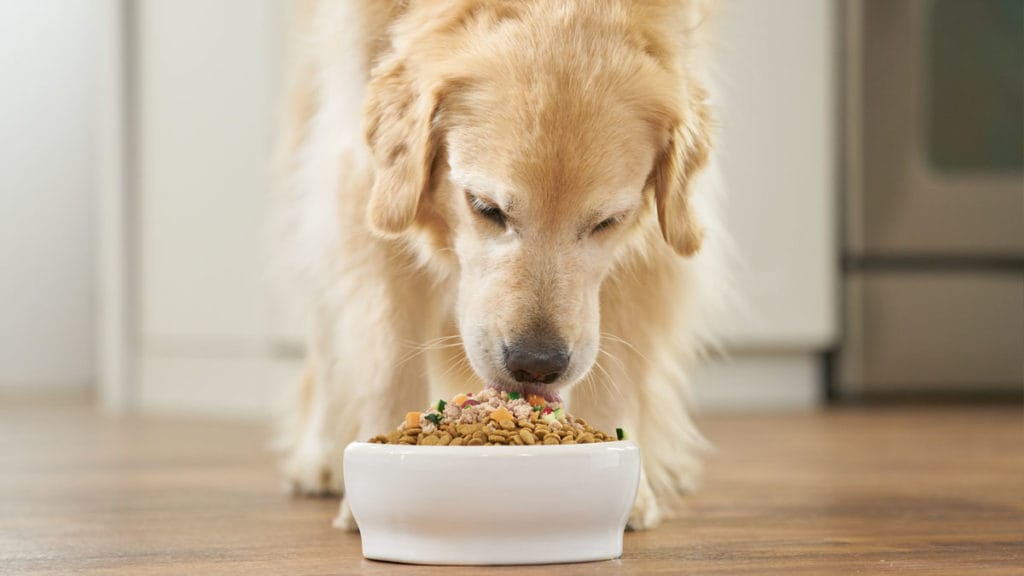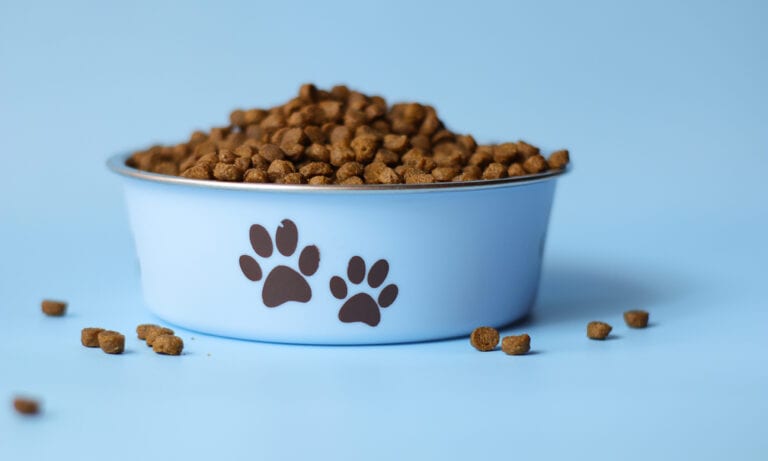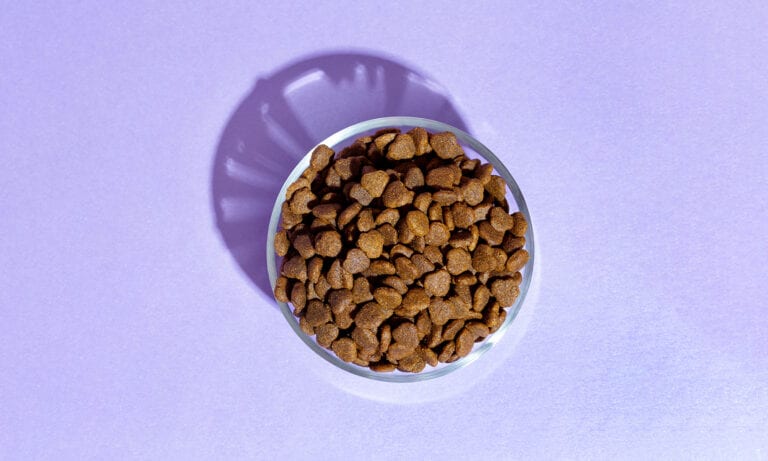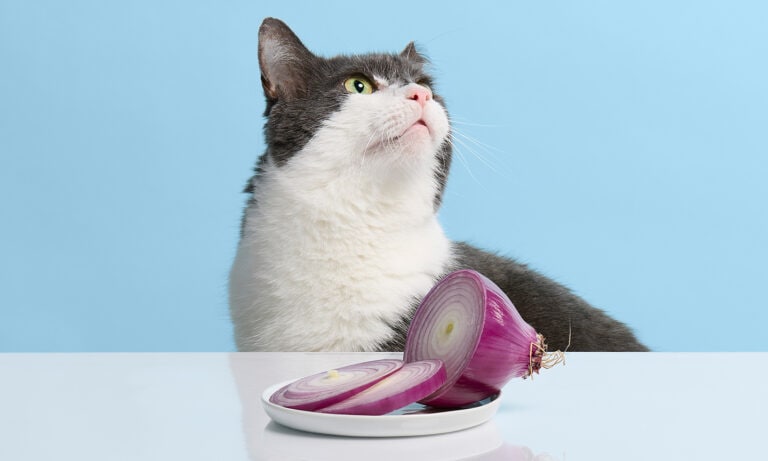If you’ve ever wondered what’s actually in the pet food you feed your dog every day, you’re not alone. Chances are: you might not have had the time to sit down and study the ingredients in your pooch’s meals, or if you have, some of what you’ve seen might have confused you.
As it turns out, “What’s in your pet food?” can actually be a loaded question. Besides being on the lookout for certain ingredients that could actually be bad for your dog, it’s important to understand that not all ingredients are created equal when it comes to health benefits for your dog, either.
What to avoid: To start, ingredients that you likely want to avoid for your dog include some kinds of gluten, like wheat and corn, which are the most common. You can try grain-free dog food and wheat-free dog food options to promote with your pet’s health. “Gluten is used as a binder and has been associated with inflammatory bowel disease,” says Judy Morgan, DVM, CVA, CVCP, CVFT. “Carrageenan is another binding agent that has also been associated with IBD.”
Sugar, dextrose and high-fructose corn syrup are other offending ingredients you might find in pet food, since they’re often used as preservatives and to increase calorie density. Dyes are also sometimes used to make the products more appealing to people, says Dr. Morgan, but many have been banned for use in human food, and they serve no benefit for the pet. “Preservatives like BHA, BHT and propylene glycol have been shown to be carcinogenic in laboratory studies, yet are still used in pet food and pet products,” said Dr. Morgan, so you’ll obviously want to be on the lookout for them as well.
Ingredients that are good for your dog: On the flip side, there are also certain ingredients that are great for your dog’s diet. Pet food options, like American Journey kibble, include the following healthy components:
• USDA-grade protein: Species-appropriate protein is so important, says Dr. Morgan, which, for dogs, is generally meat and organs. For example, real, deboned chicken is not only tasty for your pup, but it’s full of amino acids to help maintain lean muscle mass.
• Spinach: A great blood tonic and high in A, B, C and K vitamins, spinach also contains potassium, manganese and iron, says Dr. Morgan. Keep in mind, though, that dogs with a history of oxalate stones should generally avoid having too much of these greens, since spinach is oxalate-dense and may further complicate the issue.
• Dried kelp: Never considered kelp before? Kelp makes a great ingredient in pet food because of its high doses of trace minerals like iodine, zinc, magnesium, potassium and iron, says Dr. Morgan.
• Sweet potatoes: A good fiber and carbohydrate source, Dr. Morgan likes sweet potatoes for pups because they also contain beta-carotene and they’re not as high in solanine as white potatoes, which can cause inflammation and contribute to arthritis.
• Chickpeas: Often used to replace grains in grain-free dog food, they provide an additional source of protein; fiber; vitamins A, B, and C; lecithin; and potassium.
• Carrots: Loaded with beta-carotene for eye health, as well as vitamin A, carrots are also a good source of natural sugars and fiber.
• Blueberries: Full of great antioxidants and high in vitamins A, B, C and E, blueberries make a great addition to pet food.
• Salmon oil: Morgan particularly likes salmon oil because it’s high in omega-3. “You may want to alternate salmon oil with a white fish oil, like sardine, as large fish like salmon tend to have higher levels of heavy metal accumulation,” she added.
• Flaxseed: Not only is flaxseed high in omega-6, but it also provides some omega-3s and is a good source of fiber.
• Mangoes: Perhaps an overlooked food when it comes to dogs, mangoes are high in fiber, vitamins A and C, and potassium. “They’re also very beneficial for eye health due to their vitamin A content,” Dr. Morgan added.
Always remember to consult with your vet before changing up your dog’s diet, and start reading those ingredient panels closely!
Share:









